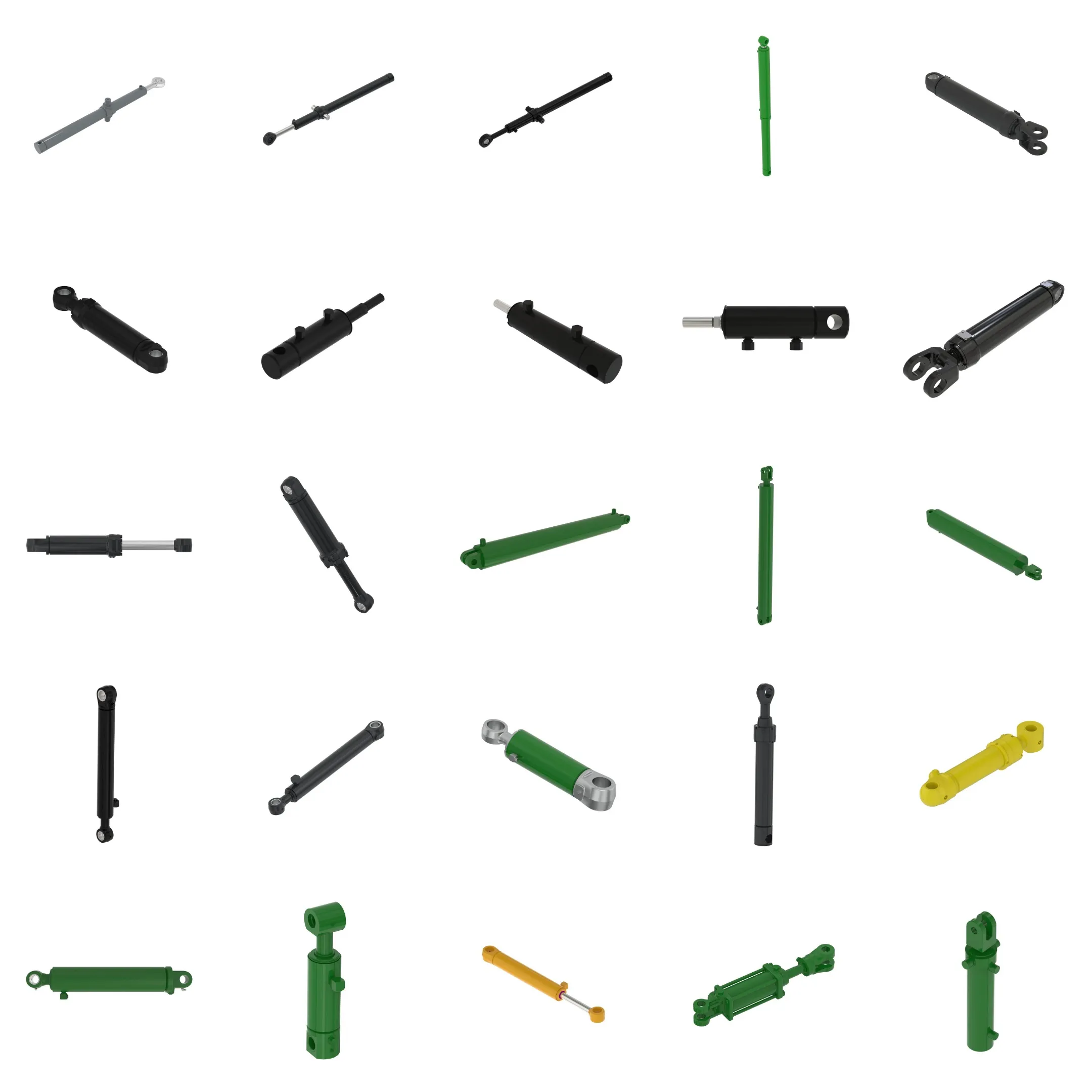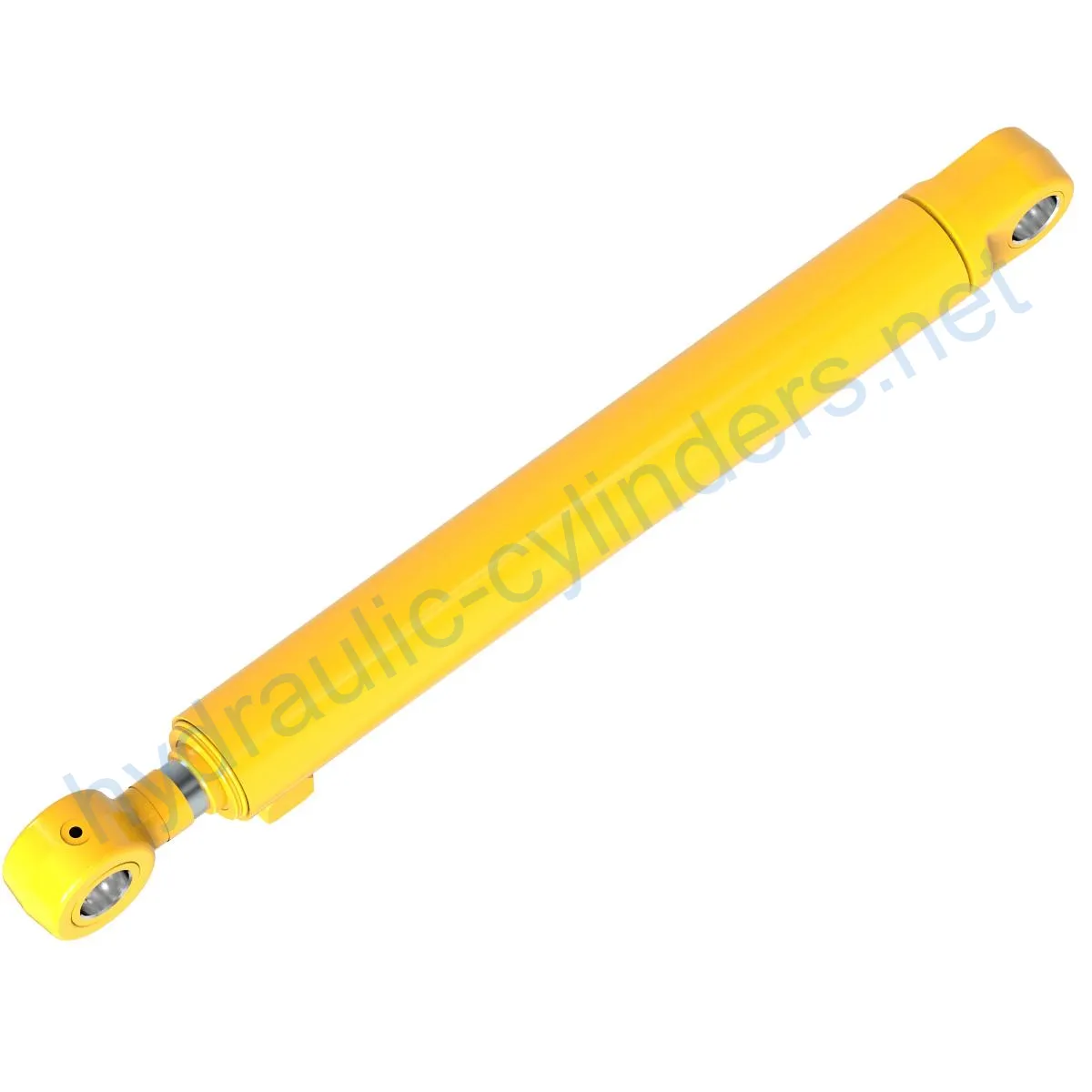Replacement Of AHC17329 Steering Hydraulic Cylinder
Replacement Of AHC17329 Steering Hydraulic Cylinder
The Replacement Of AHC17329 Steering Hydraulic Cylinder is a crucial component in various heavy machinery, including the 624K, 624K-II, and 624KR models. This hydraulic cylinder plays a vital role in steering and controlling the machinery, ensuring smooth and efficient operation.
Specifications
- Weight: 43.63 lb
- Height: 5 in
- Length: 34.3 in
Key Features
- Improved Equipment Performance: Replacing damaged or worn-out hydraulic cylinders restores the machinery’s normal operational capabilities, ensuring optimal performance in various applications.
- Enhanced Safety: Regularly replacing hydraulic cylinders reduces the safety risks associated with cylinder failures, ensuring the well-being of operators and machinery.
- Overload Protection: New cylinder designs often incorporate better overload protection mechanisms, enhancing safety during operation.
- Quick Installation: Modern hydraulic cylinders are designed for easy installation and replacement, minimizing downtime.
- Standardized Components: Many hydraulic cylinders are standardized products, making it easier to obtain replacement parts from the market.
We specialize in producing hydraulic cylinders that can perfectly substitute for these steering hydraulic cylinders. Our products are meticulously manufactured to meet the highest standards, ensuring reliable performance and compatibility.
Applications
- Excavators: The hydraulic cylinders in excavators’ booms or buckets may get damaged due to prolonged use or overload, requiring replacement to restore normal operation.
- Cranes: Hydraulic cylinders in crane boom lifts are prone to wear and tear during frequent lifting and lowering operations, requiring regular replacement to maintain safety.
- Tractors: The front-end loader hydraulic cylinders in tractors may experience leaks or performance degradation during continuous lifting and tilting operations, necessitating replacement.
- Harvesters: The hydraulic system undergoes high pressure during harvesting, and fatigue can lead to cylinder damage, requiring timely replacement to maintain operational efficiency.
- Automated Production Lines: Hydraulic cylinders are used to control robotic arms and other automated equipment. Cylinder failure can significantly impact production efficiency and should be promptly replaced.
- Die-Casting Machines: Hydraulic cylinders in die-casting machines may experience performance degradation under high pressure and temperature conditions. Regular replacement ensures product quality.
- Mining Equipment: Hydraulic cylinders are used for lifting and moving heavy loads in mining equipment. Regular inspections and replacements are necessary to avoid equipment failures in harsh working environments.
- Bulldozers: The wear of hydraulic cylinders on bulldozer blades can result in decreased pushing power. Timely replacement is required to maintain operational efficiency.
Maintenance Tasks
- Regular Inspection: Periodically inspect the hydraulic cylinder for leaks, damages, or abnormal wear. Address any issues promptly.
- Proper Lubrication: Ensure the hydraulic cylinder is adequately lubricated with the recommended hydraulic oil to minimize friction and maximize its lifespan.
- Seal Replacement and Calibration Check: Regularly replace worn-out seals and perform calibration checks to guarantee optimal performance and prevent leakage.
During installation, it is crucial to provide proper guidance on aligning the cylinder correctly. We recommend using suitable installation brackets to secure the cylinder firmly. Additionally, we provide recommended inspection, repair, and replacement procedures, as well as replacement parts and rebuilding services, to extend the lifespan of the hydraulic cylinder.
Safety Considerations and Environmental Factors
When using hydraulic cylinders, it is essential to follow safety measures to prevent accidents and ensure operator well-being. Adhering to correct installation, lubrication, and adjustment procedures is crucial. Regular inspections, maintenance, and adhering to environmental regulations are essential to minimize environmental impact and ensure sustainable operations.
Troubleshooting and Common Issues
1. Cylinder Leakage: If the hydraulic cylinder is leaking, check the seals and replace them if necessary. Ensure proper lubrication and check for any damages or misalignment.
2. Cylinder Sticking or Binding: Inspect the cylinder for any obstructions or debris. Clean and lubricate the cylinder as needed to ensure smooth operation.
3. Insufficient Cylinder Force: Check for any restrictions in the hydraulic system or incorrect alignment. Verify that the hydraulic pump is supplying adequate pressure, and ensure the cylinder is properly lubricated.
It is essential to diagnose and resolve hydraulic cylinder issues promptly. Providing troubleshooting tips, solutions, and preventative measures can help readers effectively address and minimize potential problems.

Design Considerations and Selection Criteria
When selecting hydraulic cylinders, several key factors should be considered:
- Load-Bearing Capacity: Ensure the cylinder can handle the required load and provide sufficient force.
- Sealing Capability: Opt for seals made from durable materials like polyurethane or nitrile rubber to ensure effective sealing and longevity.
- Durability: Choose cylinders with robust construction and surface treatments to withstand wear and tear.
- Safety: Consider cylinders with built-in safety features to protect against overloading and system failures.
- Maintainability: Prioritize cylinders that are easy to maintain and repair, with accessible components and clear documentation.
Seals and lubrication play vital roles in ensuring the proper functioning of hydraulic cylinders. Using various sealing components, such as piston seals and rod seals made from wear-resistant materials, can prolong the cylinder’s lifespan. Additionally, the cylinder’s body and threaded ends undergo precise treatments to enhance wear resistance. Regularly lubricating the cylinder with the appropriate hydraulic oil is essential for maintaining optimal performance.
Regular inspections and preventive maintenance measures are of utmost importance. It is crucial to provide accurate installation guidelines, recommend the use of suitable mounting brackets to secure the cylinder, and suggest inspection, repair, and replacement procedures. These practices ultimately maximize the lifespan of the hydraulic cylinder.

About Our Company
We are a leading manufacturer and wholesale distributor of replacement hydraulic cylinders, offering a comprehensive range of products for domestic and international markets. Our company is known for its professionalism, international certifications, customizability, advanced production equipment, and exceptional after-sales service.
By prioritizing quality and customer satisfaction, we have established ourselves as a trusted provider in the industry. We strive to meet the diverse needs of our clients while ensuring the highest standards of product performance and reliability.

Author: lyl
参观我们的 VR 工厂
通过以下方式参观我们的 VR 工厂
液压缸应用:


